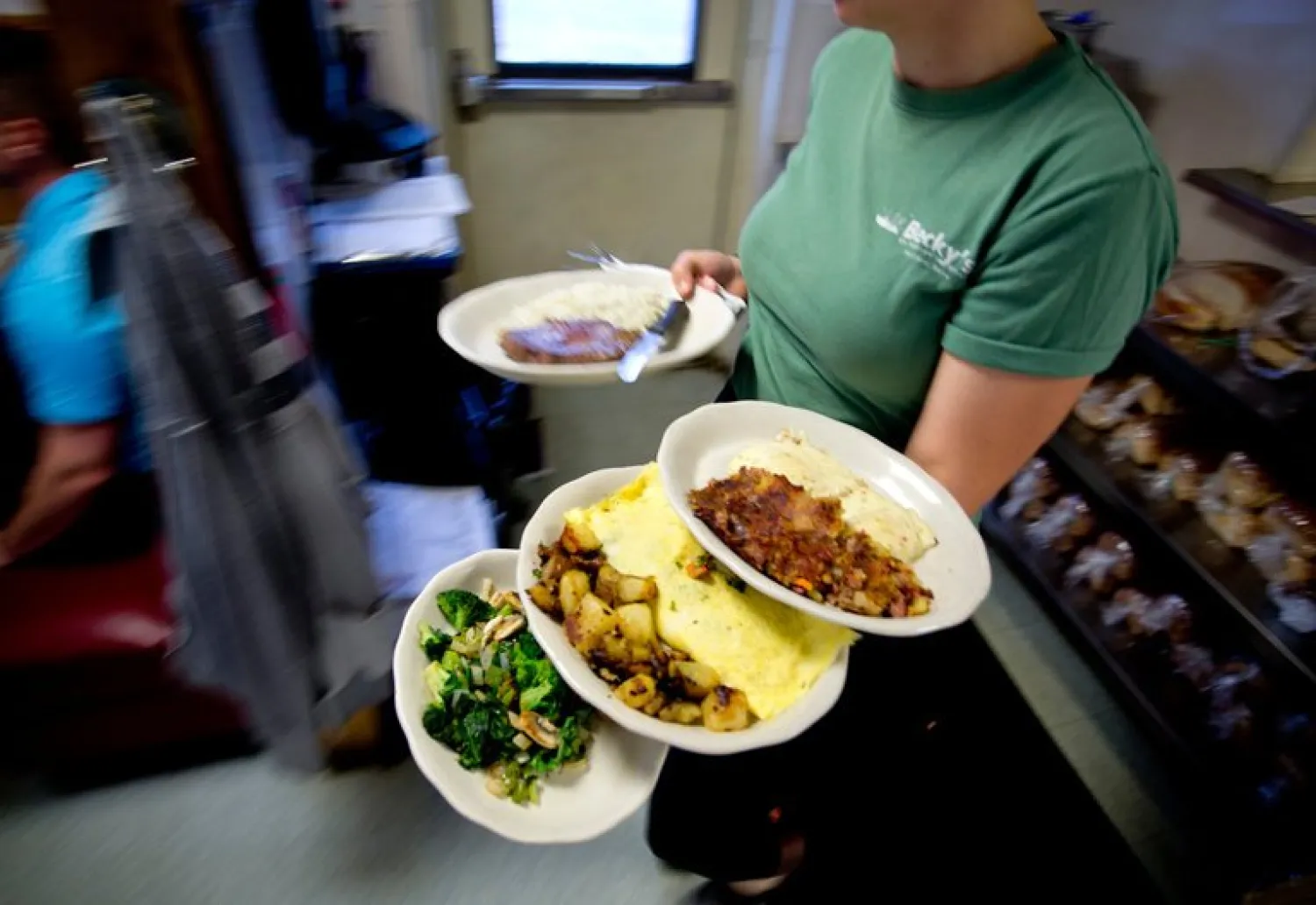EGGS over easy, home fries, bacon and toast. It’s $9.99 at Tops Diner in Newark but $5.79 at Pop’s Diner near Oklahoma City. If the same meal in two parts of the country has such a different price, should America have a single national minimum wage?
As recently as three years ago, Democrats led by President Barack Obama had settled on pushing a national minimum wage increase to $10.10, up from $7.25, which was set in 2009. Since then, a movement working on behalf of low-wage workers has pushed for a $15 national minimum wage in what is known as the Fight for $15. This noble movement has succeeded in several high-cost cities, including New York, San Francisco, Los Angeles and Seattle, where wages are set to rise on a glide path to $15 in several years’ time.
But a wage floor that is right for the high-cost coasts may be the wrong fit elsewhere. After all, in a 2016 report we noted that a typical dentist appointment in Jackson, Tenn., ran $67, but it was $108 in San Francisco. A dozen eggs was $3.99 in Oakland, Calif., but 93 cents in Fargo, N.D. And according to the real estate website Rent Jungle, a two-bedroom apartment in the Los Angeles metro area runs $2,907 per month. In Philadelphia it’s $1,739; in Jacksonville, Fla., it’s $1,112.
Seen in this context, the fight for $15 makes more sense for people living in Brooklyn, where parking can run $30 a day, than it does for people in Cumberland, Md., where a space costs $35 per month. And it explains the very different minimum-wage levels that have been set in different states. In 2014, in addition to Seattle and San Francisco’s vote for $15, Arkansas, Alaska, South Dakota and Nebraska all chose to raise their minimum wages. In these four rural, lower-cost states, the new minimum wages rose to between $8.50 and $9.75.
That is why the national minimum wage should instead be a range of national minimum wages that recognizes the differences in living cost and labor markets in a way that is both flexible and permanent.
Here’s how it can be done in a way that provides a living wage to all regions of the country. To begin with, the average national minimum wage — that is, the minimum wage in regions of the country that experience a cost of living close to the national average — should be pegged to an objective measure that recognizes labor market realities and lifts the maximum number of people out of poverty
We suggest setting this standard to exactly one-half of the median wage for the average hourly, nonsupervisory wage worker in America. In January, that computed to a wage of $10.90 per hour, which would be the highest minimum wage of all time in real dollars. At this level, a full-time minimum-wage earner with two children would surpass the federal poverty level by more than $1,000, even before such federal benefits as the earned-income tax credit are taken into account.
Next, the purchasing power of the minimum wage should be roughly the same across the nation, from Palm Springs, Calif., to Youngstown, Ohio. To do this, regions would be placed in one of five categories based on what the government calls regional price parities, which is a measurement of the difference in prices for similar products between regions. In the highest-cost areas, like New York City and Newark, the minimum wage would be set at 15 percent above the national average, or $12.55.
In low-cost places, like Valdosta, Ga., the minimum wage would climb to $9.25, or 15 percent below the $10.90 national average minimum wage that workers in Flagstaff, Ariz., and elsewhere would earn. Each January, the minimum wages would rise based on the new median wage for hourly workers.
Could America handle a tiered minimum wage? We already do. Twenty-nine states now set their wage floor above $7.25, so different minimum wages shouldn’t be a problem. And states and cities would still be free to set a higher wage under this proposal.
The regional minimum wage is not so much a compromise but a modern look at an old problem. We are one country, but hundreds of different micro-economies grappling with the technological forces that are changing the nature of work and replacing low-wage employment with kiosks and machines.
That is why that the political battle for the minimum wage has been as much a regional skirmish as a partisan one.
Under our plan, everyone would eventually get to a $15 minimum wage, but high-cost areas, like many along the Acela Corridor and the Pacific Coast, would reach and quickly exceed that threshold at the right pace for their economies. An approach like this could pave the political path for a substantial and permanent minimum wage increase for millions of Americans, and that’s not nothing.
The New York Times









